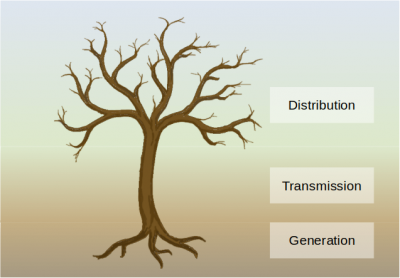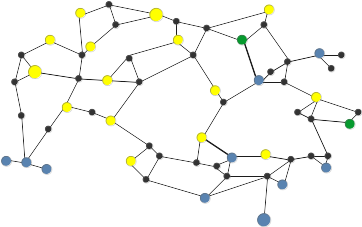National Grid consultation on upgrading etc
Posted by: @transparentSince the Energy Bill hasn't yet passed through Parliament, there is bound to be a lot of uncertainty.
https://www.gov.uk/government/collections/energy-security-bill -> https://www.parliament.uk/business/news/2022/july-2022/lords-considers-energy-bill/ -> https://bills.parliament.uk/bills/3311 given royal assent on 26 October 2023. Part 5 https://www.legislation.gov.uk/ukpga/2023/52/part/5/enacted is about the ISOP.
mea culpa.
I have some homework to catch up on.
Save energy... recycle electrons!
This post is copied across from the Welcome topic because it's more relevant here.
Are you suggesting to National Grid that they should be targeting upgrading their local distribution infrastructure (at the expense of their National infrastructure, presumably). It is local connections that seem to be the problem both for generators and consumers.
This depends on where you are in the country.
As we move towards an energy supply system which has thousands of generation sites spread across the regions, I believe that the grid topology should reflect this.
The National Grid Transmission network runs at 400kV (and a few sections at 275kV) but was designed around a few major power plants which existed in the 1930s. It's rather like a tree which picks up nutrients from relatively few main roots (routes!) and transports them to the leaves via a trunk.
Now in 2024 we have generation from vastly more sites, most of which are not far from the leaves.
The historical approach by National Grid Electricity Transmission (NGET) to increase capacity has been to build a thicker trunk.
I contend that strategy is
- too expensive (more than HS2)
- ineffective
If we consider the future grid as an organic structure, then its topology should develop in similar fashion to a biological model.
Generation and Demand sites are interlinked by a number of different pathways.
That organic grid is not only much cheaper, but also far more resilient to failure and malicious attack.
Save energy... recycle electrons!
Neither National Grid Electricity Transmission (NGET) nor the regional DNOs are permitted to own or control any form of storage or generation.
Storing electricity lowers the need for greater grid capacity.
Less power must be carried during times of peak demand because it's already being held where it's needed.
So if we want to avoid paying higher bills for massive grid upgrades, then NGET need to see us implementing storage.
Save energy... recycle electrons!
@transparent So a distributed multi-path arrangement similar to communications networks? This would be sensible from a robustness (and security!) standpoint, too.
For domestic customers, I imagine the problem is co-ordinating or managing supply and demand at the local, neighbourhood level. Some thought has been given to this in the past and I believe that hooks are included in smart meter protocols to facilitate load management. There could be problems making use of these given a widespread public belief that they could be used to remotely terminate supplies.
Posted by: @transparentNGET need to see us implementing storage.
Vehicle-to-grid or vehicle-to-load as mandatory for new EVs and chargers? 🙂 At the very least the more wealthy (those with EVs and their own charging point) should have to lead the storage rollout!
Yes @chickenbig - Vehicle to Grid (or Vehicle to Home) is the sort of 'consumer driven' approach which needs to be evident.
But let's look at the current situation:
- Only EVs with CHAdeMO connectors, like the Nissan Leaf, can readily be used with V2G chargers.
- The more common CSS connector needs a new design specification to be able to export energy from the car.
- The V2G Trial run by OVO/Kaluza successfully implemented about 440 V2G sites before the money ran out.
- The final report on that Sciurus Trial by Cenex was brief and positive, but took none of the energy losses into account.
- EVs use LithiumMNC batteries, which suffer greater degradation per charge-cycle than do batteries with other lithium chemistries
It's a lot cheaper to build static storage batteries for incorporation into the home.
The Achilles heel is the high profit margins and high costs of installation for domestic storage.
Save energy... recycle electrons!
- 26 Forums
- 2,418 Topics
- 54.8 K Posts
- 314 Online
- 6,098 Members
Join Us!
Worth Watching
Latest Posts
-
RE: Setback savings - fact or fiction?
@cathoderay Re defrost systems, i asked the engineer...
By MikeF , 22 seconds ago
-
RE: Ecodan Pump Issues… Circulation pump turns off when heat pump compressor turns off
@ashp-bobba I agree. I think I'll simplify the system j...
By Patch321 , 3 hours ago
-
Is it normal to use power from the grid when running off the battery?
I've recently had a Solis hybrid inverter fitted, with ...
By JohnnyB , 7 hours ago
-
RE: Recommended home battery inverters + regulatory matters - help requested
@jamespa having read through this thread I will add a f...
By JohnnyB , 8 hours ago
-
RE: Reliable, easy to use home battery options
I have just had a my inverter and battery installed, ab...
By JohnnyB , 9 hours ago
-

RE: Samsung E101 Error Message and my ASHP Efficiency
@johnnyb amazing that the our forum is serving its purp...
By Mars , 11 hours ago
-
Best option for controller upgrade? - Grant Aerona
Fairly new heat pump owner - Grant Aerona 3 10kw - and ...
By Topher , 11 hours ago
-
RE: How to use my Hanchu battery storage for home without it feeding back into the grid?
@countryman-helmsley Is the Hanchu ESS app definitely ...
By SKD , 12 hours ago
-
RE: Installer Fitted 9kW Instead of 11kW Heat Pump and Changed MCS Paperwork - What do I do?
@jamespa thank you. I think I'll go for 59 at -8, we ca...
By MairiA , 13 hours ago
-
RE: Daikin Wireless Thermostat
@toodles Yes. British Gas seems to have done an exce...
By Bash , 13 hours ago
-

RE: Is my Samsung gen6 outside air temp sensor missing a sheath/sleeve?
@papahuhu Mine is similar. Is your house not getting...
By bontwoody , 15 hours ago
-

Just a brief update to keep things transparent. Secti...
By DREI , 16 hours ago
-
RE: Ideal HP290 14kW ASHP - how to optimise
Sorry forgot about the three choices. It’s the 2nd one ...
By Davesoa , 16 hours ago
-

I continue to receive emails from homeowners sharing he...
By Mars , 17 hours ago
-

RE: Water outage in the the south-east
We think alike @editor ! All those bottles (and I expec...
By Toodles , 17 hours ago
-

RE: Say hello and introduce yourself
@mrfield, welcome to the forums. Please go here and ...
By Mars , 19 hours ago
-
RE: Octopus Cosy Heat Pump Owners & Discussion Thread
I did not hear back from the tech team. (Assume they ar...
By swwils , 21 hours ago
-
RE: Advice for a novice on Mitsubishi Ecodan 6kW
In the Home Assistant firmware the data points...
By F1p , 1 day ago
-
RE: GSHP WOES! Midland based engineer recommendations?
@johnbroome if it is not the pressure in the expansion ...
By ASHP-BOBBA , 1 day ago
-
So I hear the export MPAN that UKPN assigned should be ...
By Batpred , 2 days ago





